Sara Berahman and Irene Curulli
Over the past 30 years, several interventions have had a disastrous impact on the flow of the Khoshk river in Iran. Uncontrolled urbanization along the river, abandonment, and emergency flood protection barriers changed the river’s unique physical features and have negatively affected its relation with nearby communities. Besides these physical changes, social perceptions and environmental memories have determined and affected its value as a heritage landscape over time. In this blog, Sara Berahman and Irene Curulli (Eindhoven University of Technology) argue that in order to understand the value of this landscape for the future, we need to explore the specific values, mindsets, and cultures that have driven its development in time and space.
Water is a source of life for all human beings, and it is an integral part of a society’s cultural identity, value systems, beliefs, and traditions. Water can symbolize life, the transition between life and death and vice versa (e.g. the River Jordan in the Christian faith), but also the struggle of life-or-death (Strang 2005). A river should be a dynamic landscape that can be re-evaluated through time. Whymah H. Herendeen states that “[t]he river, in geography and as an image, takes on the characteristics of the culture of which it is part” (Herendeen 1986, 5) and as they evolve over time, also the values of the river change.
The river Khoshk is not an exception. As a natural river, it has shaped the urban fabric of the city of Shiraz which has developed since 934 AD. Geographically, the river originates from the confluence of the Nahre Azam and Chenar Sookhteh rivers and continues its flow towards Maharlou Lake. The Khoshk river crosses the urban fabric of Shiraz diagonally and divides it into two unequal halves (figures 1 and 2). During winter periods, the river is a resting place for many migrating birds. In Iranian culture, water is considered a gift from God to feed agricultural cultivations and support people’s life. Based on this belief, special rain-seeking ceremonies and prayers (ṣalāt al-istisqa) are held in the whole country revealing the significance of water in Iranian culture and religion.
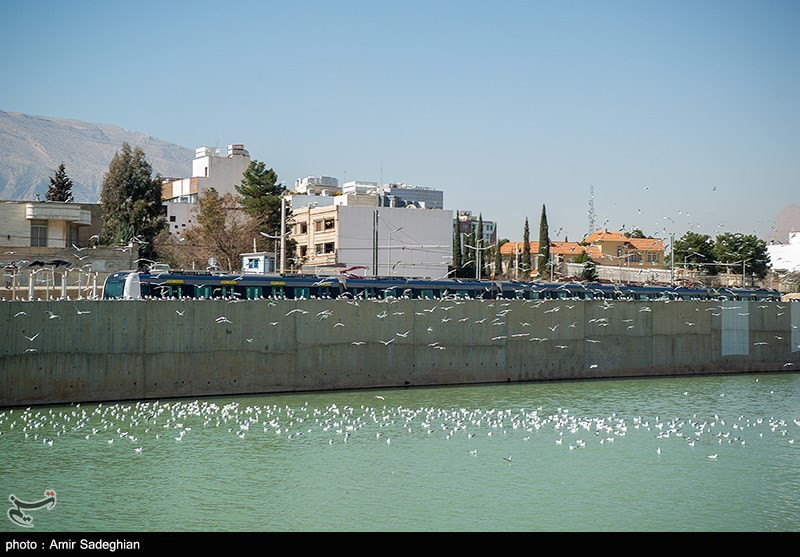
In the past, the river was a place of memory, collective and individual, resulting from an effective relationship between humans and the river environment. Nowadays, however, the Khoshk river should be considered as an artificial river that flows in a narrowed river bed of concrete walls. Despite its high potential for the improvement of the city’s qualities, it is not an element of the city's identity today and hardly plays a role of landscape heritage in people’s minds. According to Seyed Amir Mansouri, the bond between the inhabitants and the river is broken, and the “[l]oss of users' mental memories has caused a lack of river Khoshk identity” (Mansouri and Habibi 2010, 75).
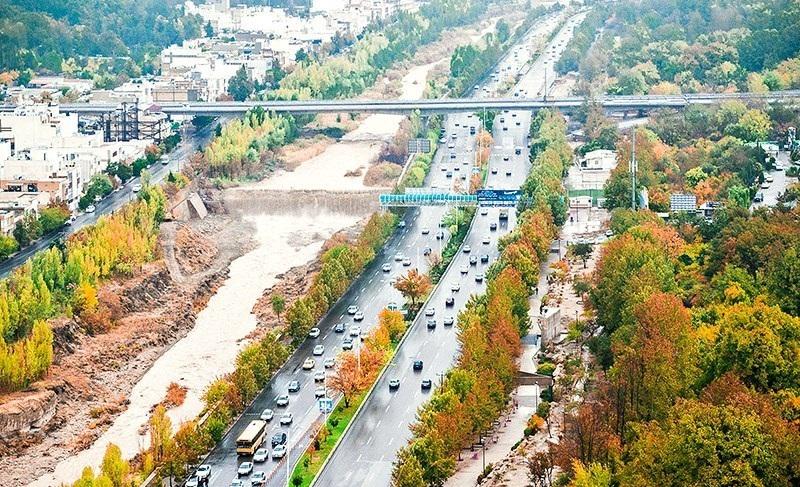
The Khoshk river encounters various problems when crossing the city. They include the overuse of available land along the river, incompatible and disruptive activities such as road and multi-story parking, overdevelopment of housing estates at the periphery, the lack and fragmentation of open spaces, disregarding the boundary of the river and climate-related environmental problems, such as flooding in some wet years (Akhavan 2018, 7). In fact, the growth of Shiraz along the western borders of the river and the increasing urbanization of the river basin constitute the main disruptive factors in the relationship between humans and the environment. These uncontrolled developments prevent water discharge and lead to flooding along the river. During these events, the Khoshk river transfers a huge volume of water from the west to the east side of the city. As a result of the increasing drought in Iran and the drying up of water supply, the green fields and gardens along the river have dried up. While the river transfers a huge volume of water from the west to the east side of the city, the concrete walls along the river act as a border.
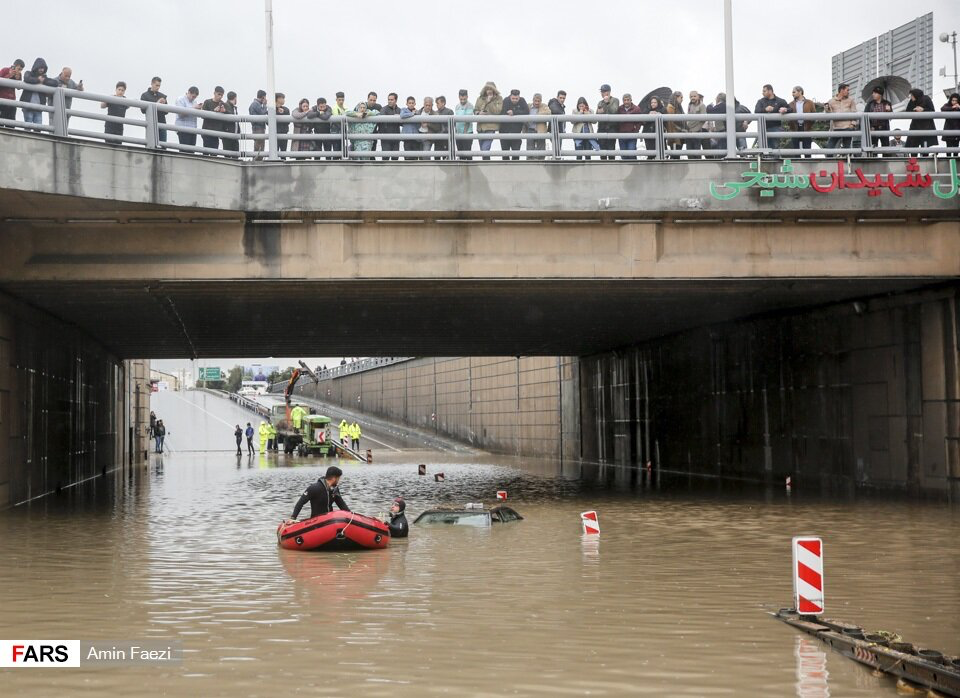
It is important to consider the effects of these problems on the changing social perception of the values of rivers over time. River pollution, soil aridification, droughts, and destructive floods have changed people’s lived experiences and their perception of the river values through time. The 2019 flood for example, which coincided with the celebration of Nowruz, the Iranian new year (fig. 3) caused a lot of human and economic losses. During the rainy days of past winters, however, when the river had better water quality, the amount of people walking along its banks to watch migratory wintering birds was impressive. The river was a place of recreation and entertainment, and the experience attached new positive memories and values to the river (figure 4).
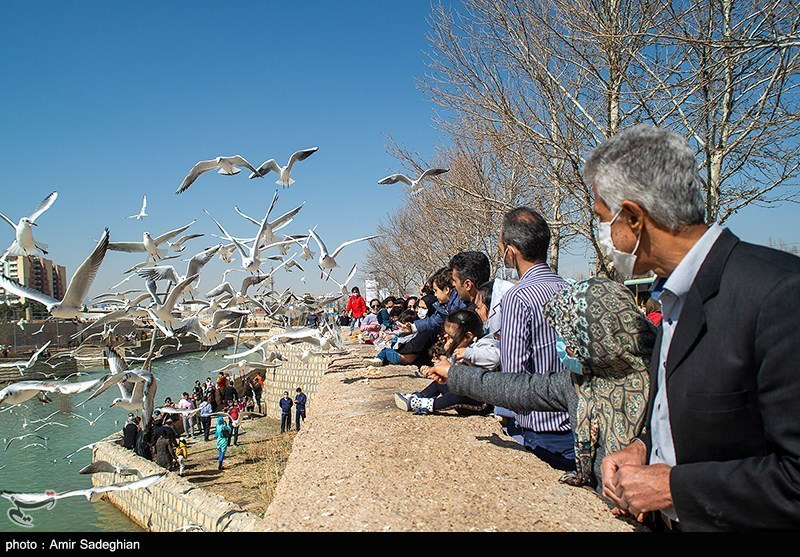
Nowadays, lower water quality and environmental problems have caused the absence of migratory birds and consequently, the positive mental image and perception of the inhabitants has reduced or faded away. For this reason, citizens' perception of the river Khoshk includes environmental components. Even their emotional reactions to the Khoshk river are due to environmental characteristics such as drought, dehydration and natural life needs (Ali Asadpour, 2016, p. 412). The performance of a work of art entitled "Blue without water" in the city of Shiraz (figures 5 and 6) illustrates this point. This art event was implemented by a group of artists under the supervision of a young artist named Seyed Jalal Hashemi with the cooperation of Shiraz Municipality on August 30th, 2016. Hashemi organized audience participation by using social media networks, asking citizens to bring pieces of blue cloth to the dry river bed. This event demonstrates the role played by people’s lived experiences in relation to the values of landscape elements. Engagement with the river, and memories of these moments of engagement, cultivates the sense of belonging to the water and helps determine its values.
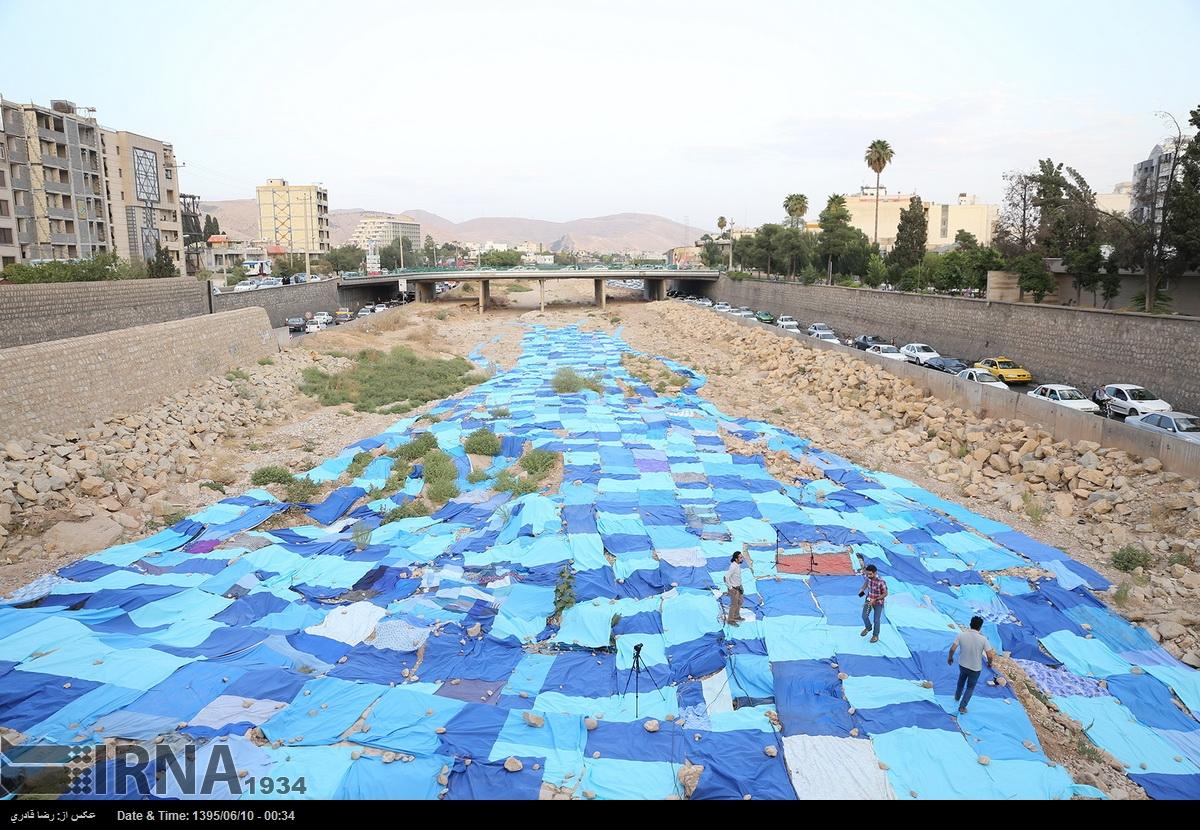
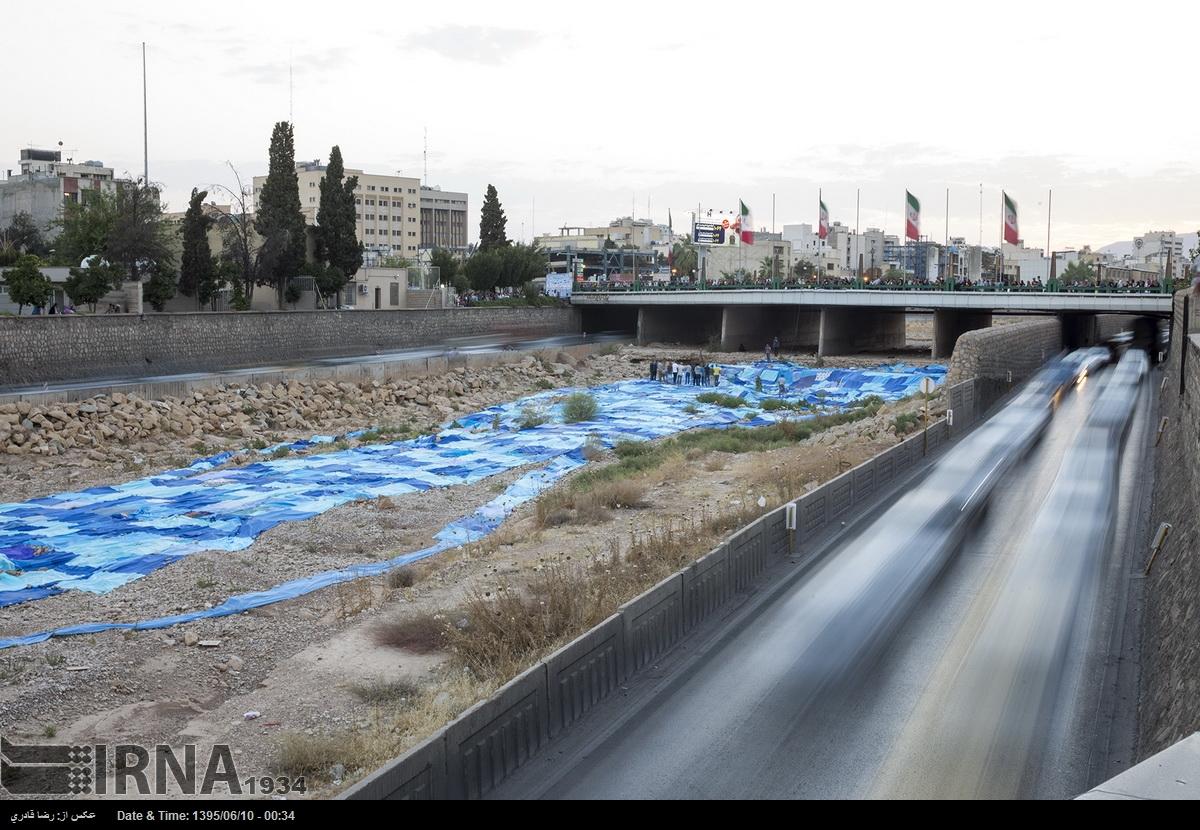
Charkhchian (2009), in her research mentions “visual quality”, “continuous presence in the place” and “variety of activities” as important factors of creating a sense of attachment in public spaces. We remember places and experience different adventures in life. These places are part of our experiences and may be symbols of that experience. Memories, both individual and collective, increase awareness about the potential and values of the river Khoshk, thus possibly motivating their participation in the maintenance of the river. In doing so, the relationship between people's memories and river values can be of mutual benefit, as the positive increase of one factor (memories) would positively influence the other (river improvement).
There are many activities and actions that the city can undertake to solve the river’s problems. The first step is to increase the river’s value and awaken the sense of belonging among citizens, by using the natural and spatial capacity of the Khoshk river’s landscape. Improving the visual quality and encouraging people to attend and create memories could lead to people's participation in the improvement of the river's qualities and values, and therefore change social perceptions of the water. Any plan to solve the problems of the river Khoshk can be successful only when the people’s perception is taken into consideration. In this way, the river becomes an added value to the environment, re-creating a sense of life.
Acknowledgement
Sara Berahman is a post-doc researcher who has joined the chair of (Architectural Design and Engineering) under the supervision of Dr. Irene Curulli at TU/e. Her research interest is the intersection of architecture, landscape architecture and heritage, focusing on the transformation of urban landscapes, particularly water-related ones, by considering social sustainability. This blog was peer-reviewed by members of the PortCityFutures community, and edited by the PortCityFutures editorial team: Carola Hein, Hilde Sennema, and Vincent Baptist.
Sara took part in the Open Online Course Water Works: Activating Heritage for Sustainable Development: https://online-learning.tudelft.nl/courses/water-works-activating-heritage-for-sustainable-development/
References
Akhavan, Amirmohammad. (2018). Landscape design through Khoshk river. Shiraz: Shahr-Va-Khane, Consulting engineers and city planners, 1-315.
Asadpour, A., Mozaffar, F., Faizi, M., & Behzadfar, M. (2016). Application of Social Perception Variables in Urban Rivers Regeneration (Case Study: Shiraz Khoshk River). J.Env. Sci. Tech, 397-417.
Charkhchian, Maryam. (2009). Investigation and Analysis of Factors Affecting the Increase of Attachment to Urban Public Spaces with an Emphasis on Diverse Activity, Doctoral dissertation, Iran University of Science and Technology (IUST)
Herendeen, Wyman H. (1986). The river and the myth of geography. Pittsburgh: Duquesne University.
IMNA, reporter. 2019. IMNA news. May 21. https://www.imna.ir/news/376726/.
Mansouri, Seyed Amir, and Amin Habibi. 2010. "An analysis of Factor Contributing to thr Formation of Landscape Ensuring Sustainable Environments." Bagh-e Nazar 15: 63-78.
Mashregh, Reporter. 2020. Guests of the Khoshk river. January 25. https://www.mashreghnews.ir/photo/1172548/
Strang, V. 2005. "Common senses. Water, sensory experience and the generation of meaning." Journal of Material Culture 10: 92-120.
